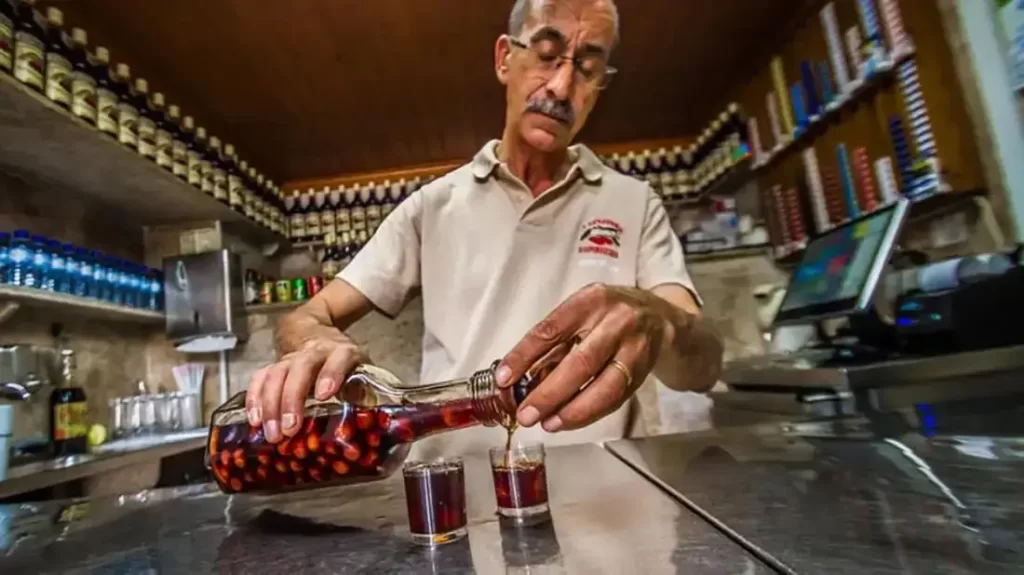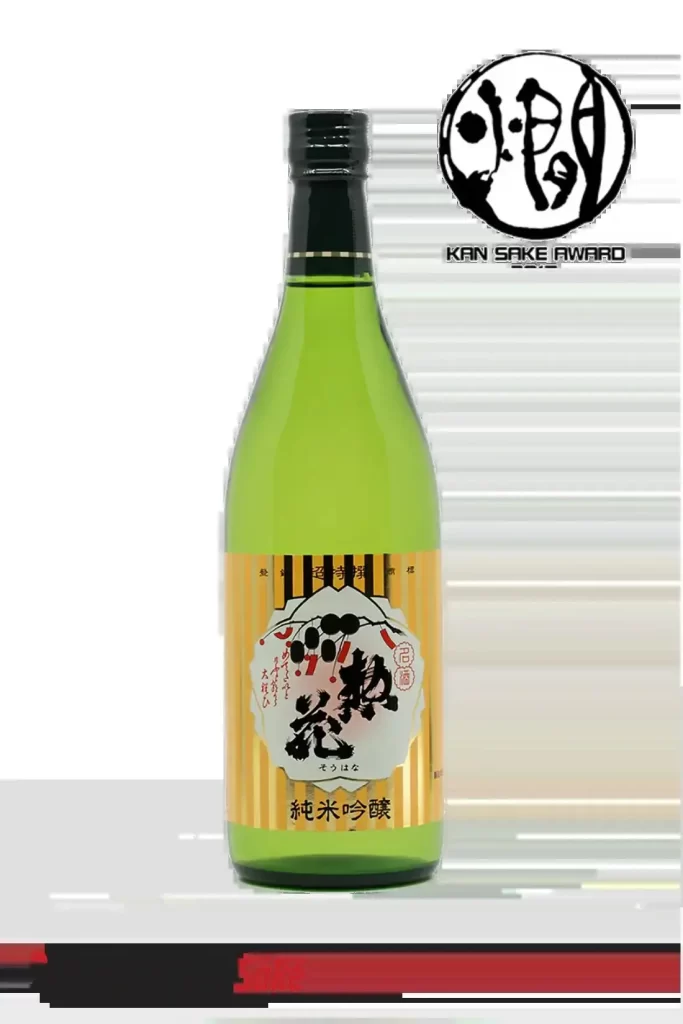Table of Contents
When we think of traditional alcoholic beverages, the mind often drifts toward famous spirits like whiskey, wine, or vodka. However, there are several lesser-known yet deeply treasured drinks that carry rich histories and distinct flavors. Among these, Ginjinha, Ginjo, and Junmai Ginjo Sake stand out for their cultural importance and unique production methods. While originating from vastly different regions, these drinks share a dedication to craft, flavor, and tradition.
In this post, we’ll explore the vibrant worlds of Portuguese Ginjinha and Japanese Ginjo Sake, particularly focusing on the elegance of Junmai Ginjo.

What is Ginjinha?
Ginjinha, also known as Ginja, is a Portuguese cherry liqueur made by infusing Morello cherries in alcohol, typically aguardente, and adding sugar for sweetness. It is a staple in Lisbon and other parts of Portugal, offering a perfect balance of tartness and sweetness that has made it a beloved local tradition.
How Ginjinha is Made
The process of making Ginjinha is simple yet requires patience. Sour cherries are steeped in alcohol for several months, allowing the fruit’s essence to infuse into the spirit. After the infusion, sugar and sometimes cinnamon are added, giving the liqueur its characteristic sweetness and warmth. The final product is then bottled, sometimes with a few cherries left inside for additional flavor and authenticity.
Ingredients for Ginjinha:
- Morello cherries (sour cherries)
- Aguardente (Portuguese brandy)
- Sugar
- Cinnamon (optional)
The Tradition of Ginjinha
Ginjinha is usually served in small shot glasses, either with or without a cherry (“com elas” or “sem elas”). In Lisbon, you’ll find small Ginjinha bars where locals and tourists alike enjoy this sweet, tangy drink as a digestif or even as an aperitif. Ginjinha’s taste makes it a perfect pairing with dark chocolate, pastries, or savory dishes like cheese.
Understanding Ginjo Sake
From the vibrant streets of Lisbon, we move to the precision and craftsmanship of Ginjo Sake in Japan. Sake, a fermented rice wine, is a symbol of Japanese culture and craftsmanship. Within the sake world, Ginjo represents a higher grade, distinguished by the rice polishing process and the delicate flavor that comes from it.
What is Ginjo Sake?
Ginjo refers to a style of premium sake where the rice is polished to at least 60% of its original size. The outer layers of the rice, which contain fats and proteins, are removed to allow the core starches to create a cleaner and more refined flavor during fermentation. Ginjo sake is known for its fruity and floral notes, making it an excellent pairing for light foods like sushi and sashimi.
Ginjo Sake Characteristics:
- Rice Polishing: At least 40% of the rice grain is polished away.
- Fermentation Temperature: Brewed at a lower temperature than regular sake.
- Flavor Profile: Light, fragrant, with notes of fruit like melon, pear, and apple.
Junmai Ginjo Sake: The Epitome of Purity
Junmai Ginjo is a subtype of Ginjo sake, and the word Junmai translates to “pure rice” This means that Junmai Ginjo sake is brewed with only rice, water, yeast, and koji (no added alcohol). This purity gives it a robust, yet refined character.
Junmai Ginjo is particularly admired for its complexity, offering a clean and slightly fruity taste with floral undertones. This type of sake is often served chilled, which enhances its delicate aroma and smooth flavor.
How Ginjinha and Junmai Ginjo Sake Compare
Though Ginjinha and Junmai Ginjo Sake come from vastly different regions and cultural contexts, they share a few similarities that make them standout drinks for enthusiasts of craft beverages:
- Tradition: Both beverages are deeply rooted in their respective cultures. Ginjinha has been a staple in Portuguese communities for centuries, while Junmai Ginjo Sake represents the zenith of traditional Japanese brewing methods.
- Ingredients: Both drinks are relatively simple in terms of ingredients but rely heavily on the quality of those ingredients. Ginjinha uses only cherries, alcohol, and sugar, while Junmai Ginjo Sake uses polished rice, water, yeast, and koji.
- Flavor Complexity: While Ginjinha is sweet and tart with hints of cherry and cinnamon, Junmai Ginjo Sake offers a more subtle flavor profile with fruity and floral notes. Both are perfect for pairing with food, though their flavor profiles lend themselves to different cuisines.
Variations of Each Beverage

Ginjinha Variations:
Cinnamon: Some recipes include a dash of cinnamon to give Ginjinha a warm, spicy undertone.
Ginja Ninja: This modern take infuses Ginjinha with additional spices or even a bit of citrus zest to create a more complex flavor profile
Junmai Ginjo Sake Variations:
Hakutsuru Junmai Ginjo: This popular brand offers a delicate, well-balanced sake that emphasizes melon and pear notes. The rice is polished to an exacting degree to create an elegant and light flavor.
Flavored Sakes: In recent years, some brewers have begun adding fruit flavors or infusions to their Junmai Ginjo to cater to modern palates.
What to Pair with Ginjinha and Junmai Ginjo Sake
Ginjinha:
- Dark chocolate or chocolate-based desserts
- Rich Portuguese pastries like pastéis de nata
- Strong cheeses such as blue cheese or aged cheddar
Junmai Ginjo Sake:
- Sushi and sashimi
- Light seafood dishes like grilled white fish
- Delicate cheeses like brie or camembert

FAQs
How is Junmai Ginjo Sake different from regular sake?
Junmai Ginjo Sake is made with rice polished to 60% or less, resulting in a cleaner and more delicate flavor compared to regular sake.
Can Ginjinha be made at home?
Yes, Ginjinha is relatively simple to make at home with Morello cherries, aguardente, and sugar. It requires patience, as the cherries need to steep for a few months.
What is the alcohol content of Junmai Ginjo Sake?
Junmai Ginjo typically has an alcohol content of around 15-16%, which is comparable to many wines.
Conclusion
Whether you’re enjoying the sweet, cherry-infused Ginjinha on a cool evening in Lisbon or sipping on a refined glass of Junmai Ginjo Sake during a sushi dinner in Japan, these two beverages offer a glimpse into the artisanal traditions of their respective cultures. While they differ in flavor profiles and preparation techniques, both are beloved for their craftsmanship and cultural significance.
So next time you’re looking to explore something new, why not indulge in the rich history of Ginjinha, or appreciate the delicate artistry behind Ginjo Sake? Both are sure to bring an exquisite experience to your palate. Cheers!





